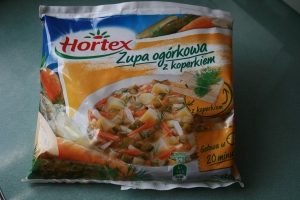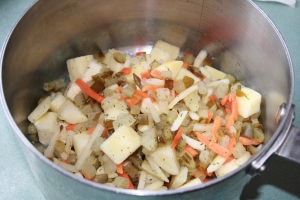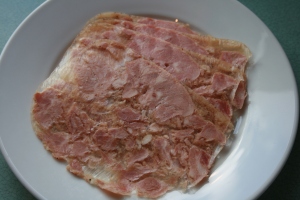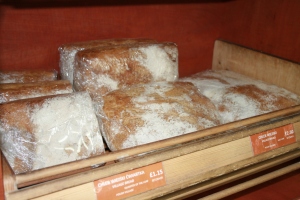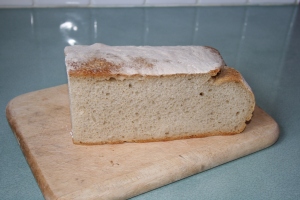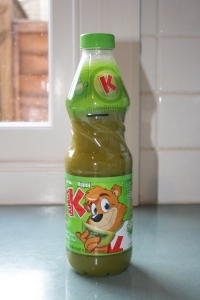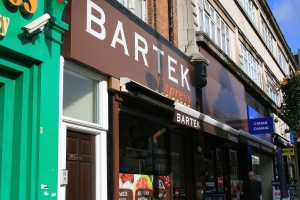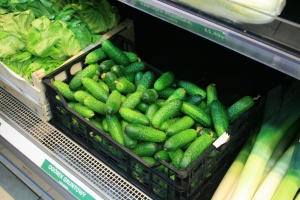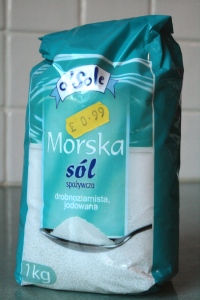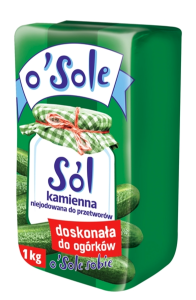There are novel items to be had in the Polski Sklep, and when I was browsing this week I spotted Hortex Zupa ogorkowa…. Gherkin soup! In the freezer section! That sounded like a good idea, quite sharp and perky, and only £1.09.
Easter is the time for sour soups in Poland, but to make the authentic version you need to boil a big fat sausage and use the water for soup stock, or make a rye flour sourdough starter and then start lobbing in sausage, its stock, hard boiled eggs, chunks of sausage and assorted veg. So this must be the Lite version. You could definitely jazz it up with the eggs, sausage and whatnot and make a very passable sort-of white borscht.
The ingredients are cubed potato, shredded carrot and Hamburg parsley (pietruszka in Polish), chopped gherkins, dill and salt.
Hamburg parsley (or parsley root, as it’s sometimes called) is interesting stuff – it looks a bit like a pallid parsnip, but has a distinct flavour of its own, and you eat the root (though the young leaves are good chopped up in salads). It isn’t sold in any supermarkets in the UK, so if you want it you have to grow it – a couple of the UK seed catalogues, including Marshalls http://tinyurl.com/nu3dfjf, sell it. It’s a winter vegetable, so probably getting toward the end of its season now, but will keep an eye on the local Polski skleps towards autumn to see if they’re stocking the fresh stuff.
I couldn’t quite make out if you were meant to defrost the soup mix before cooking, but it seemed to work OK when half-thawed, which was as long as I could wait. Incidentally, there are those who might think frozen vegetables are inferior and that fresh is always best. They would be wrong – modern blanching and freezing techniques can zap a carrot in a coat of ice faster than Elsa, and properly stored, its vitamins will stay locked in until you cook it, while unless you’re grafting away on an allotment, or paying over the odds at a farmer’s market, the veg you bring home from the shops will gradually lose nutrients until you get round to using them, no matter how well they’re looked after.
This being a basic soup mix, it’s not entirely hassle-free: as well as a litre of water, you have to add chicken stock cubes, a bay leaf, whole allspice and some back pepper. Careful with the salt, it’s already added and the chicken stock will add more. Simmer for 20 minutes and serve with a dollop of sour cream and some chopped dill on top. I didn’t have any dill so parsley had to stand in, and I used a mixture of double cream and yogurt instead of sour cream.
What fine stuff! It all tasted very fresh, the dill and Hamburg parsley lifting the flavour right out of the ordinary. The texture of the root veg was excellent, not at all frozen-mushy. All this, and crunchy gherkins too. Frozen food processors of Poland, we salute you. With the sausage-and-egg additions, it would make a pretty substantial meal, without much effort.
Other popular Polish soups include one featuring tripe and another, duck blood. Made, traditionally, with the blood of live ducks. If I see those (the soups, not the ducks) in the freezer section, I’ll let you know…

